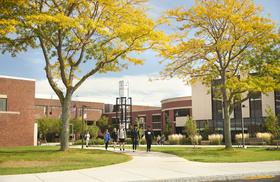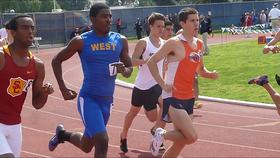The Virginia Tech tragedy in 2007 was a glaring indication that community colleges are not immune to the deadly violence that has impacted school campuses across the country. That single incident defined the risks students undertake when they head to classes every day. While schools of all kinds are taking another look at how to keep students safer, unique challenges face community colleges in this area. At the same time, a recent string of community college attacks has highlighted the need for a higher level of security, despite potential obstacles facing these schools.
Attacks at Wyoming School Precede String of Incidents
The first in a recent string of community college attacks took place at a Wyoming school last November. Reuters reports that the son of a professor at Casper College shot his father in the head with a crossbow and arrow in front of a classroom full of students. Students were able to safely exit the classroom as the father and son engaged in a struggle that left both of them dead. Later, authorities found a third victim, another college professor who had been living with the first victim, slain in her home.
“I can’t even imagine what the students in that room had gone through,” Chris Walsh, chief of police in Casper, told Reuters.
This video explains how an attack at a community college in central Wyoming and another location nearby left three people dead.
Texas Community College Sees Two Incidents in Three Months
Lone Star Community College in Texas has seen not one, but two incidents that left staff and students with injuries. The first was a shooting at the campus in January, which resulted in the hospitalization of four victims. Three of those individuals were wounded by gunfire, according to a report in the New York Times. A fourth was taken to the hospital with medical problems authorities suspected were the result of the experience.
The incident apparently began with a disagreement between two men in a wooded area adjacent to the college campus. Both of the men were counted as two of the gunshot victims. The third was a maintenance worker who appeared to be caught in the gunfire and was shot in the leg. The entire campus, which includes around 19,000 students, was evacuated and closed for the rest of the day, so authorities could complete their investigation and clean up the campus.
Less than three months after the shooting, Lone Star Community College was the scene of yet another attack. This time, the suspect used a knife to stab 14 people on the college campus, with many victims attacked in the face and neck. The suspect told police he had been planning the attacks for some time, according to a report at the Huffington Post.
Further investigation of the incident reveals the suspect, 20-year-old Dylan Quick, had fantasized about stabbing people to death. Quick lived in a quiet suburban neighborhood about 10 miles from the college campus. Neighbors said they never would have suspected this mild-mannered young man of such a violent act.
Fortunately, no one in the second attack was fatally injured, although 12 were taken to area hospitals. Four were transported by Life Flight helicopters, while the others were taken by ambulance. Two were listed in critical condition but were upgraded to good condition after receiving treatment. However, students at the college now live in the aftermath of two consecutive traumas that have undoubtedly left them questioning whether a college will ever be perceived as a safe experience for them again.
Recent Shooting Leaves Two Wounded
The most recent community college incident involved a Virginia school not far from Virginia Tech. CNN reports that an 18-year-old student at New River Community College entered the school’s campus inside a Virginia shopping mall and opened fire. Two women were wounded in the attack before the shooter was subdued by police officers and an off-duty security guard. Both of those women were listed in stable condition, and are expected to survive their injuries.
This video reports on a shooting frenzy at New River Community College in western Virginia.
There were reports that the shooter preempted his intentions on social media a short time prior to the shootings. However, none of those reports have been confirmed by authorities. At this time, investigators are unsure of a motive in the shooting, or whether the suspect personally knew either of his victims. He was subdued within five minutes of the beginning of the attacks, which may have limited the amount of damage the shooter was allowed to do.
Challenges Facing Community Colleges
As reports of school violence continue, community colleges are faced with unique challenges in their efforts to make campuses safer for students. Inside Higher Ed reports that one of the biggest obstacles facing schools is simply a large number of campus locations. Many of these locations might be too small for its own security staff, so schools rely on the security provided by the facility where the college is renting space. For New River Community College, the fact that security was provided by the mall and movie theatre in the facility was an added bonus.
Counseling at community colleges is often insufficient to accurately assess the mental health of students as well. A recent survey by the American College Counseling Association’s Community College Task Force found that only seven in 10 community colleges have a threat assessment team. The study also found that many of the counselors at community colleges are forced to take on additional responsibilities due to budget constraints, which leaves them even less time to work directly with students.
Despite the obstacles, recent events have shown security to be a serious and imminent concern for community colleges across the country. As more acts of violence are reported, schools will be forced to come up with new methods for keeping staff and students safe on their campuses.
Questions. Contact us on Facebook. @communitycollegereview















